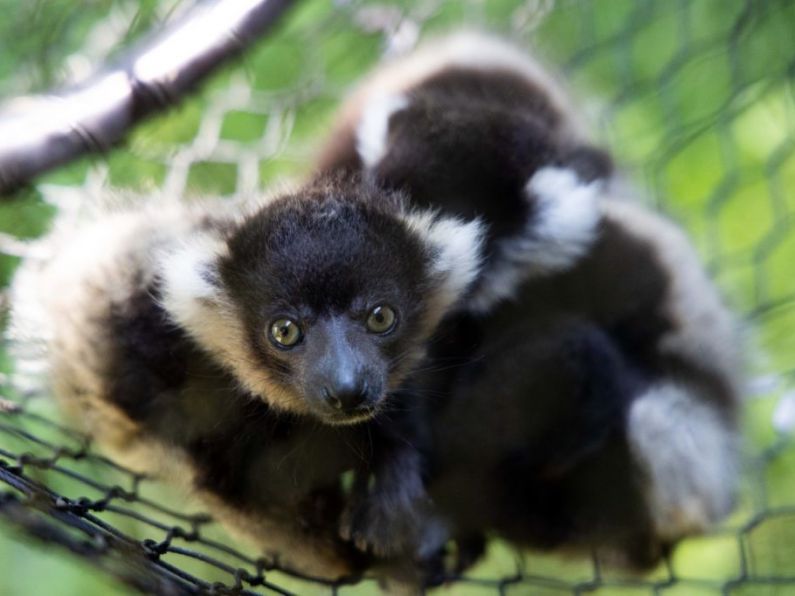Three critically endangered black and white ruffed baby lemurs have been born, Fota Wildlife Park recently announced.
The babies, whose genders are still unknown, were born on June 19th to mother Cloud, 20, and father Paraic, 10, after a gestation period of 102 days.
All lemurs are one of the most threatened mammal families in the world, with 79 of the 81 species considered to be in danger of extinction according to the International Union for Conservation of Nature (ICUN).
"Having ongoing success with this critically endangered species indicates how happy and healthy these primates are at Fota. Cloud is a very experienced mother who takes it all in her stride," Senior Ranger, Cathriona Ni Scanaill, said.
The babies appear to be confident and active, and spend their time playing in a tunnel that leads to their island habitat.
Fota Wildlife Park is asking for the public's help naming the three new arrivals.
Though the gender of the new arrivals is not yet known, the public can enter individual name suggestions on their website. The winner will receive one of three year-long Conservation Annual Passes.
Lemurs as an endangered species
Fota Wildlife Park is the home to three species of lemur, the black and white ruffed lemur, the ring-tailed lemur, and the red-bellied lemur. The Park participates in off-site breeding and management programmes for all three.
They also opened the Madagascan Village in 2019 to educate the public on the need for conservation globally and to highlight the plight of the country's ecosystems and biodiversity, both of which are under severe threat.
Over 80% of the flora and fauna in Madagascar can only be found on the island. This is all under threat because of deforestation, hunting, and illegal trade in wildlife, with 90% of the native forest cover currently lost.
Ruffed lemurs are also the world’s largest pollinator. When they feed on nectar, by sticking their long nose deep into the flower, the lemur’s snout becomes coated with pollen which is then transported to other flowers – making the animal a vital pollinator of the Traveller’s Palm tree in Madagascar.
For more news, click here.













